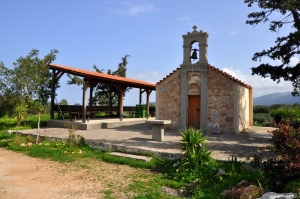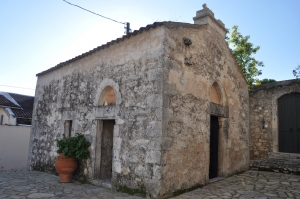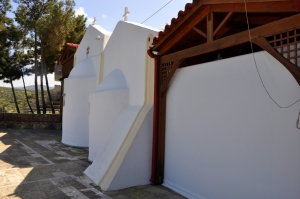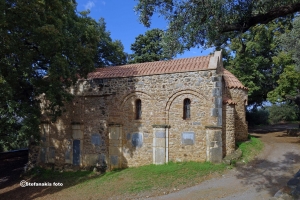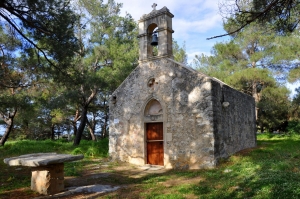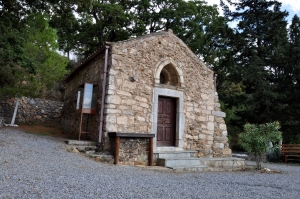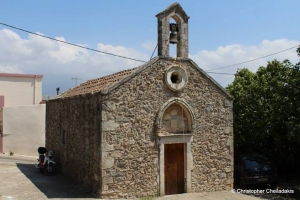East of Malia, at position Loutres, there is the church of Saint George. The church is built on the site of a former church of the 9th century and dates back to Venetian period (13th century). Its interior bears frescoes, among them Saint George on his horse and various saints. On the walls we can discern engravings of the Medieval traveller (dates 1594,1613,1614 and 1616).
A small, single-nave, barrel vaulted church that is located on the south side of the square, which has the same name. The church dates back to the period of the Venetian Rule, more specifically to the 15th century. There are two entrances, one on the west and one on the north, with ornate Venetian aedicules. On the monolithic lintel of the north entrance, there are two elaborate spirals. Just in front of the Altar, there is a tomb, whose owner is unknown.
The cavernous two-aisled church of Saint Charalambos and Saint Nicholas is located in the village Skotino, Province Pediada and has unobstructed sea views. Internally, because of being carved, it has an irregular shape and the two aisles are joined together with a large arch.
Between the villages Episkopi and Sgourokefali of Pediada province we meet a beautiful small park with pine trees, in the middle of which there is the old temple of the Lord Christ. The small single-nave church functioned as the temple of a small monastery that was a dependency of the Monastery at Agarathos.
Agios Panteleimonas is a Byzantine church that must be one of the oldest in Crete. It is about 3 Km away from Kasteli. On the outer walls of the church, there are marble crosses and inscriptions that must belong to an older Roman or Byzantine building.
Saint George at the beautiful pine-wooded position Toupaki by Episkopi was the temple of a small monastery, which since 16th century was a dependency of the monastery Agarathos.
Near Diavaide there is the church of St. George Sfakiotis, bearing frescoes of the 14th century (there is an inscription of 1390). One of the frescoes represents St. George and St. Demetrius on horseback crossing the sea with octopuses, crabs, eels, and lobsters below their legs.
On November 3rd, every year, Cretans celebrate St. George Methystis (i.e. St George that makes people drunk). On that day they first open the barrels and taste the new wine made of the grapes that were collected two months ago. Normally Saint George is celebrated on April 23 every year, but because he was always put in a special place in the hearts of the Greeks they gave him the advantage to be honored twice a year.











